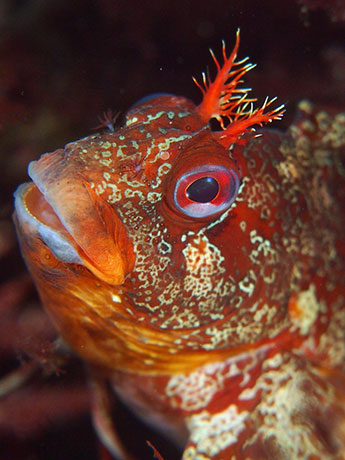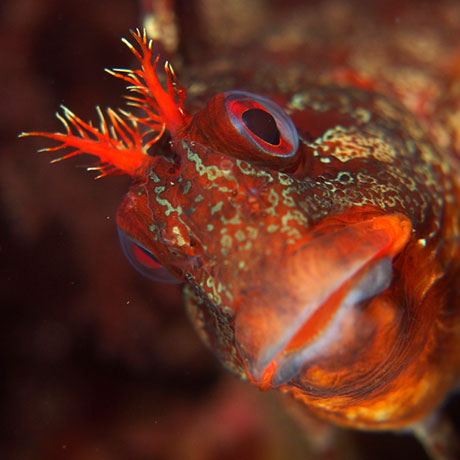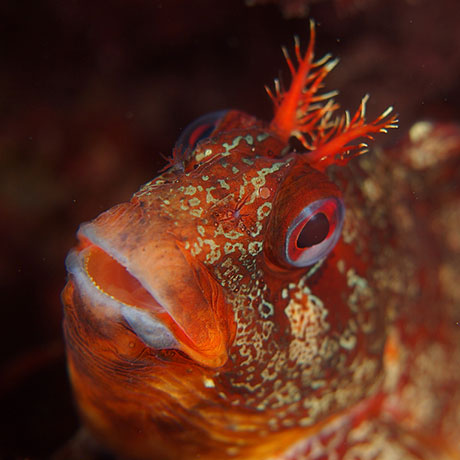

This charming little fish, with the expressive face, generally looks as if it is either smiling or puzzled. Unusually small for a blenny, you can see them in temperate waters peering out from crevices in reefs or wrecks.

Tompot blenny taken on the Port St Mary Ledges, Isle of Man. Photo credit: Tim Nicholson.
A large mouth, eyes set high on the head and its tufted tentacles above each eye give the Tompot Blenny (Parablennius gattorugine) a comical appearance. A much smaller fringed tentacle is positioned on the nostril beneath each eye.

Tompot blenny taken on the Port St Mary Ledges, Isle of Man. Photo credit: Tim Nicholson.
Like all blennies, Tompots lack the buoyancy of a swim bladder and look more like they are wriggling than swimming.
Tompot blennies are curious fish and may come out to take a closer look at a diver. Some even let themselves be stroked. If you dive the same site regularly, you may see the same Tompot in its hole on each visit.
The male guards the eggs laid by his mate in a particular crevice over several breeding seasons, living in the same location for up to 4 years. He is territorial, defending his patch and recovering from injuries received in disputes over territory. Further observations by Paul Naylor and D. M. P. Jacoby included resident males wiping eggs with greatly expanded anal glands, adult-type fighting between juveniles and unusual behaviour where a large male manipulated an empty mollusc shell for the attention of two smaller tompot blennies..
Sharp teeth means they eat a variety of animals, including sea anemones which are usually left alone by predators.

Tompot blenny taken on the Port St Mary Ledges, Isle of Man. Photo credit: Tim Nicholson.
Tomport blennies live down to around 20 m in north-west Europe from Denmark and Scotland to Portugal and in the Meditteranean Sea. They have also been recorded in the Israeli part of the Mediterranean Sea and in Greece. They are, though, absent from the North Sea.
Further Reading:
Great British Marine Animals, by Paul Naylor.
Paul Naylor and D. M. P. Jacoby. 2016. Territoriality in the tompot blenny Parablennius gattorugine from photographic records. Journal of Fish Biology. Volume88, Issue4 1642-1647.
Bailly, N. (2013). Parablennius gattorugine (Linnaeus, 1758). In: Froese, R. and D. Pauly. Editors. (2013) FishBase. Accessed through: Costello, M.J.; Bouchet, P.; Boxshall, G.; Arvantidis, C.; Appeltans, W. (2013) European Register of Marine Species